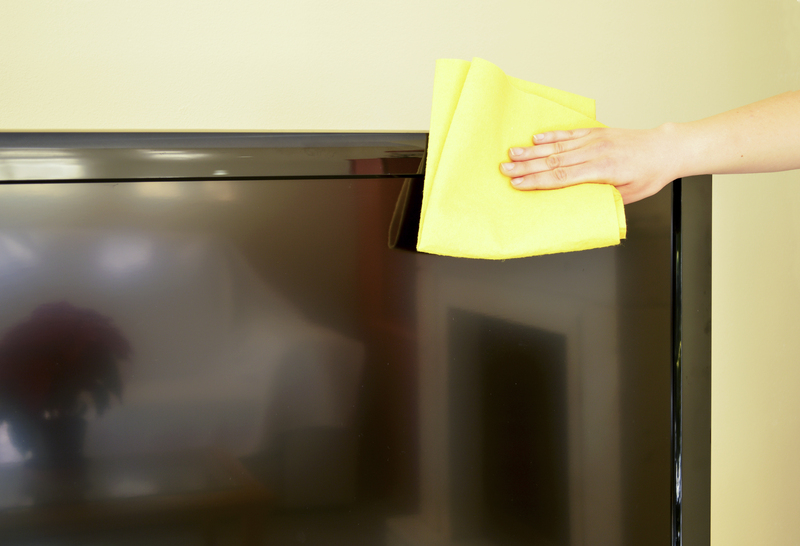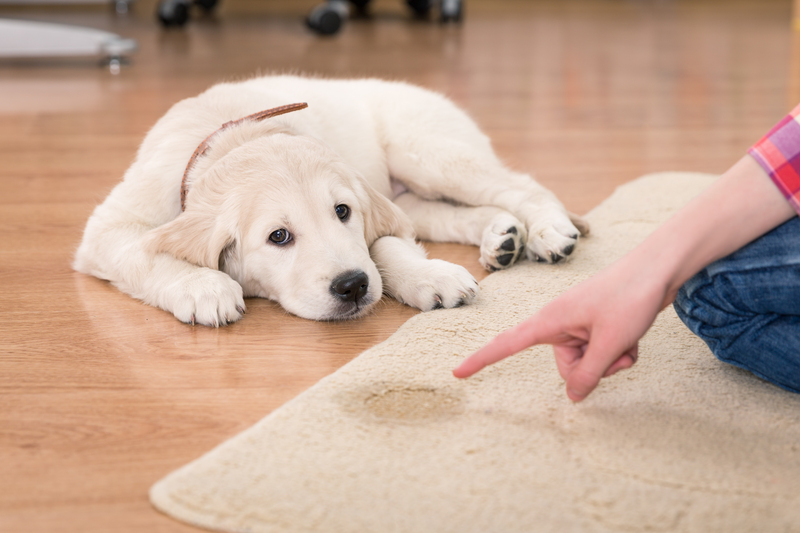Efficient Techniques for Cleaning uPVC Window Frames
Posted on 15/09/2025
Efficient Techniques for Cleaning uPVC Window Frames

Why Cleaning uPVC Window Frames Matters
Cleaning your uPVC window frames efficiently does more than preserve their aesthetic appeal. It prolongs their lifespan, prevents staining, and can help you spot potential issues like mold or sealant damage early on. Here's why regular cleaning is important:
- Preserves Appearance: Dust, bird droppings, and airborne particles can dull uPVC's natural shine.
- Prevents Tough Stains: Regular cleaning stops grime from becoming ingrained, which can be tougher to remove.
- Deters Mold and Mildew: Moisture and organic matter can lead to fungi growth, especially in window recesses and seals.
- Improves Functionality: Clean frames allow for smoother operation of windows and minimize risk of jams or sticking mechanisms.
How Often Should You Clean uPVC Window Frames?
Routine maintenance is key to efficient cleaning of uPVC window frames. Ideally, window frames should be cleaned every 2-3 months, or more frequently if you live near the coast, a busy road, or in areas prone to dust and dirt accumulation. Difficult stains or mildew may require additional attention.
Essential Tools and Supplies for Cleaning uPVC Windows
To ensure the best results, gather the following tools and products for your cleaning session:
- Soft microfiber cloths or non-abrasive sponges
- Warm water
- Mild detergent or pH-neutral soap
- Soft-bristle brush or old toothbrush
- White vinegar solution (for tough stains and mineral deposits)
- Spray bottle
- Non-abrasive cream cleaner (optional)
- Plastic scraper (never use metal to avoid scratching)
Step-by-Step Guide: Efficient Cleaning Techniques for uPVC Window Frames
Follow these steps for effective uPVC window frame cleaning and superior results:
1. Preparation - Remove Dust and Loose Dirt
Use a dry microfiber cloth or a soft-bristle brush to gently sweep away loose dust, cobwebs, and debris. This prevents scratching the frame surface during subsequent cleaning steps.
2. Basic Cleaning Solution
Mix a small amount of mild liquid detergent (like dish soap) in warm water. Dip a soft cloth or sponge into the solution and wring out excess liquid. Avoid harsh chemicals or ammonia-based products, as these can discolor or damage uPVC finishes.
3. Wipe Down the Frames
Gently wipe the entire surface of the uPVC frame, working from top to bottom. Pay special attention to corners, crevices, and sealant areas where grime often accumulates. Rinse your cloth frequently to avoid spreading dirt.
4. Tackle Stubborn Stains and Marks
For persistent stains, such as greasy marks, tobacco stains, or algae:
- Use a white vinegar and water solution (equal parts) in a spray bottle.
- Spray the mixture onto the affected area.
- Allow it to sit for 2-3 minutes, then gently scrub with a soft brush or old toothbrush.
- Rinse with clean water and dry with a soft towel.
5. Clean the Window Sills and Tracks
Don't forget the window sills and sliding tracks. Dirt and grit here can affect the operation of your windows. Vacuum or brush out debris, then wipe with warm soapy water and a cloth. Use a toothbrush for tight spaces and corners.
6. Rinse and Buff Dry
Once all grime has been removed, wipe the frames down with clean water to remove any residue. Finish by drying everything with a microfiber cloth for a streak-free shine.
7. Maintenance Touches
Check window seals, hinges, and handles. Apply a small amount of silicone spray lubricant to moving parts and wipe away any excess. This will preserve both the appearance and function of your uPVC windows.
Avoid These Mistakes When Cleaning uPVC Window Frames
Using the wrong products or techniques can leave permanent damage. Here are some key things to avoid:
- Avoid Abrasives: Never use scouring pads, steel wool, or harsh chemical cleaners on uPVC windows.
- No Solvents: Avoid products that contain bleach, acetone, or other solvents that can erode or discolor the surface.
- Skip Colored Cream Cleaners: Only use white non-abrasive cream cleaners--colored formulas may stain the frames.
- Don't Use Pressure Washers: High pressure can damage seals and allow water ingress, leading to mold and rot.
Advanced Cleaning Methods for Heavily Soiled uPVC Frames
If standard techniques aren't enough, try these advanced solutions for restoring white uPVC window frames:
Baking Soda Paste for Tough Stains
Make a paste by mixing baking soda with water. Gently rub the paste onto the stained area using a soft cloth, then rinse thoroughly.
Magic Erasers for Persistent Marks
A white melamine foam sponge (commonly known as a magic eraser) can remove many stubborn scuffs and marks. Dampen and gently rub the affected area.
Professional uPVC Restoration Products
If home solutions don't work, there are specialized uPVC restorer creams available. These can revitalize faded or weathered frames--just follow manufacturer instructions carefully.
Dealing With Mold and Mildew on uPVC Frames
Black spots or fuzzy patches on uPVC window frames often indicate mold or mildew. Here's how to address the problem:
- Mix a solution of one part white vinegar to four parts water.
- Apply to moldy areas and let sit for 10 minutes.
- Scrub gently with a soft-bristle brush.
- Wipe clean with a damp cloth and dry thoroughly.
Maintaining the Longevity and Appearance of uPVC Window Frames
For enduring cleanliness and brilliant white finish, follow these ongoing maintenance tips:
- Regular Dusting: Keep surfaces clear of dust with quick weekly dusting using a microfiber cloth.
- Monthly Cleaning: Use mild soapy water to clean frames monthly--even if they don't look dirty, to prevent buildup.
- Seal Checks: Occasionally inspect seals for gaps, cracking, or mold. Early detection helps prevent costly repairs.
- Seasonal Maintenance: Lubricate locks, hinges, and runners every six months for smooth operation.
Pro Tip: Avoid hanging wet laundry near uPVC windows, as steam encourages mold growth and condensation.
Eco-Friendly and Safe Cleaning Solutions for uPVC Windows
Eco-conscious homeowners are increasingly opting for green cleaning methods for their uPVC windows. Fortunately, there are several safe and natural alternatives:
- White Vinegar: Effective for killing germs and loosening greasy dirt.
- Baking Soda: Ideal for scrubbing without scratching the surface.
- Lemon Juice: Useful for deodorizing and cutting through limescale or mineral deposits.
- Castile Soap: A natural, biodegradable mild detergent alternative.
*Always spot test natural solutions on a discreet frame section before general use to rule out possible adverse effects.
Frequently Asked Questions about Cleaning uPVC Window Frames
How do I prevent uPVC window frames from yellowing?
Yellowing is usually the result of prolonged sun exposure or neglect. Clean frames regularly, avoid using strong chemical agents, and consider applying UV-protective products designed for uPVC surfaces.
Can you use bleach on uPVC window frames?
No. Bleach can damage and discolor uPVC, potentially compromising seals. Stick to mild, pH-neutral cleaners and natural options like vinegar.
What's the best way to clean heavily stained uPVC window frames?
Begin with a warm soapy solution and progress to white vinegar or baking soda paste for deeper stains. For extreme cases, commercial uPVC restorers may help.
Are there cleaning products I should avoid?
Yes. Stay away from solvent cleaners (acetone, methylated spirits) and abrasives. Their use can permanently scratch, fade, or damage your uPVC window frames.

Summary: Best Practices for Efficient uPVC Window Frame Cleaning
- Use soft, non-abrasive tools for cleaning and drying.
- Choose mild soap or eco-friendly cleaners like vinegar or baking soda.
- Clean regularly to prevent buildup of grime and stubborn stains.
- Address mold and mildew promptly with natural solutions.
- Avoid harsh chemicals and high-pressure devices that may damage uPVC surfaces or seals.
- Lubricate moving parts occasionally to extend window life and functionality.
By following these efficient cleaning techniques for uPVC window frames, your windows will stay vibrant, functional, and visually appealing for years to come. With a little regular care and the right approach, uPVC window frame cleaning can be simple, safe, and sustainable.
Conclusion
Proper upkeep of your uPVC window frames is a worthwhile investment in your property's appearance, value, and comfort. Using gentle products and consistent cleaning schedules, you'll keep your windows gleaming and your home healthier. Remember--when it comes to efficient cleaning for uPVC window frames, less is often more; a gentle touch and the right products yield the best results.
For more practical guidance, reviews of recommended uPVC cleaning products, and home maintenance tips, bookmark this guide and refer back whenever your windows need a refresh!




